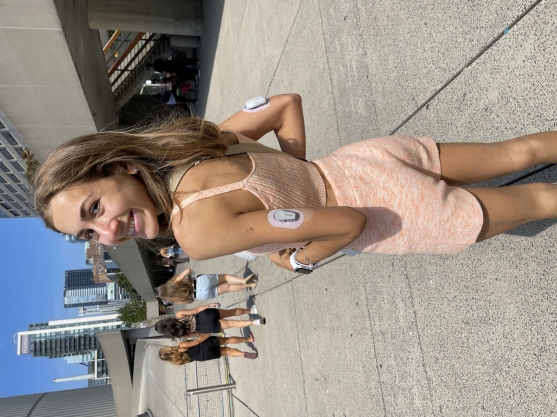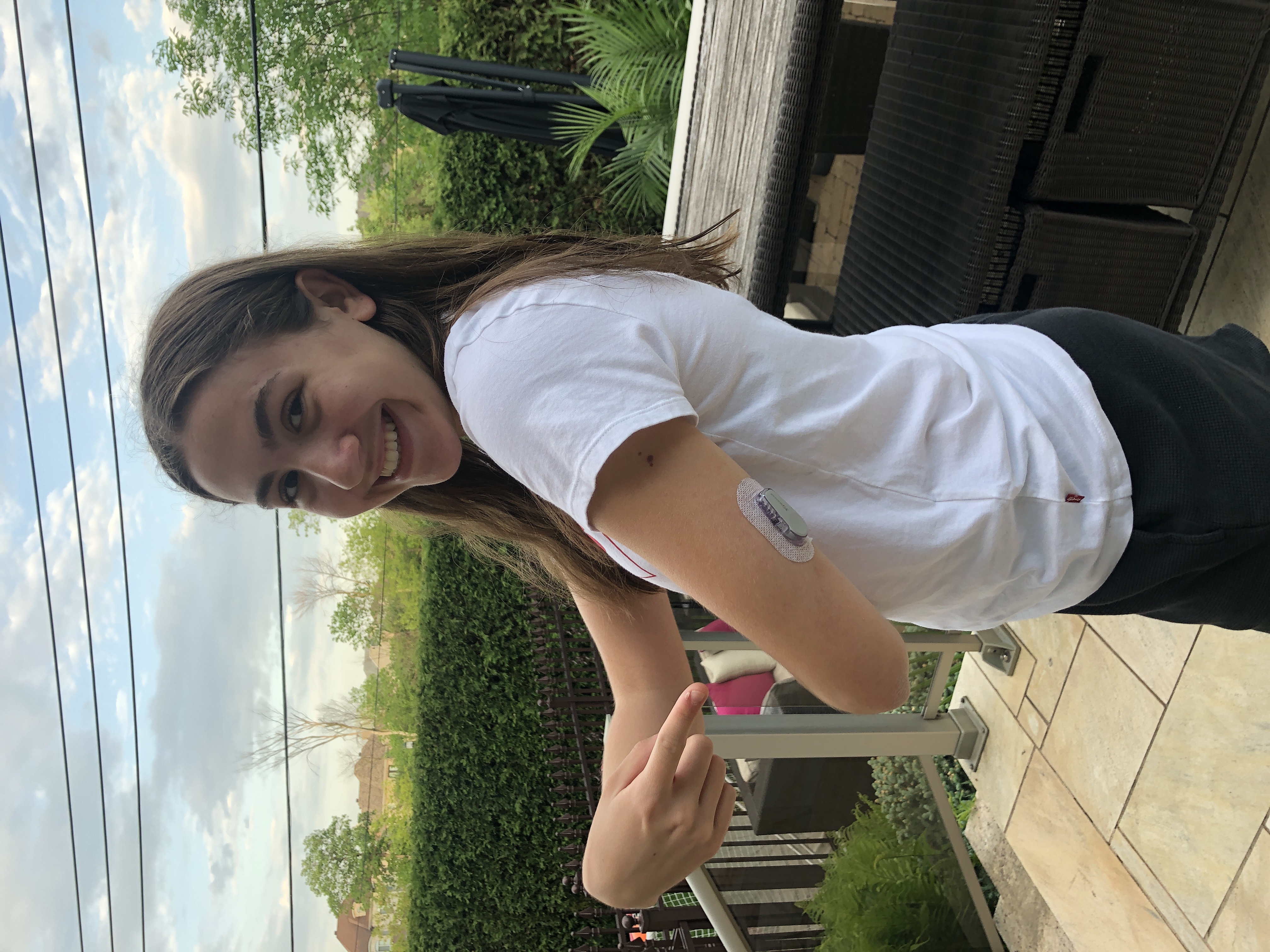
Since her diagnosis, Liana has had over 20 000 needles and 25 000 finger pokes. But thanks to the advancement of technology, the management of the disease has been made much easier for Liana, as she no longer has to poke her fingers or inject herself with needles. Thanks to dexcom, a continuous glucose monitor that she replaces every 10 days and has been wearing since 2015, she is able to continuously track her blood sugar levels. She is alerted of BG highs and lows which allow her to make the correct adjustments before anything dangerous could result. Liana treats her BG highs and lows immediately with insulin for a BG high and a juice or rapid acting sugar for a BG low. However, as much as Liana tries her very best to keep her values under control like a non-diabetic, these variations in blood sugar levels are still unpreventable and hard to control. Before having dexcom, Liana needed to poke her finger 8-10 times per day to be able to read her blood sugar, making it a lot harder to manage her levels. Dexcom has facilitated Liana’s life as her parents no longer have to wake up several times a night to measure her blood sugar levels to make sure these levels are under control. She is very happy with dexcom. In addition, in 2021, Liana began on the omnipod insulin pump. Rather than giving herself her own injections, the insulin pump, that contains insulin and must be replaced every 3 days, self injects insulin based on presets that Liana inputs herself. The pump gives her more flexibility in many aspects of life, including physical activity, as she is able to suspend her insulin delivery as needed unlike when she was on needles. She is happy with this new device and is pleased that it has resulted in better control of her blood sugar levels. However, despite this amazing technology and these incredible devices that have helped Liana significantly since her diagnosis, managing one’s blood sugar levels is still an everyday challenge and this technology will never replace a healthy person’s pancreas that produces its own insulin. That is why at LDF, we focus on supporting researchers who are studying the fundamental science behind discovering ways for a type 1 diabetic to begin producing its own insulin again. In other words, the cure!

At LDF, we are lucky to have Dr Emidio De Carolis as part of our team, our head research scientist, who discusses the latest trials and technologies with doctors and researchers who are working on uniquely finding a cure. Dr De Carolis is in charge of performing scientific research and allocating the funds appropriately through milestones to the doctors and researchers who are working solely on the cure rather than the improvement of technology. The funds are then allocated to the doctors and researchers who we believe at LDF are helping us get one step closer to finding this cure. We would like to thank Dr Emdio De Carolis for being a great contribution to our team and for working diligently in helping LDF make the right decisions.